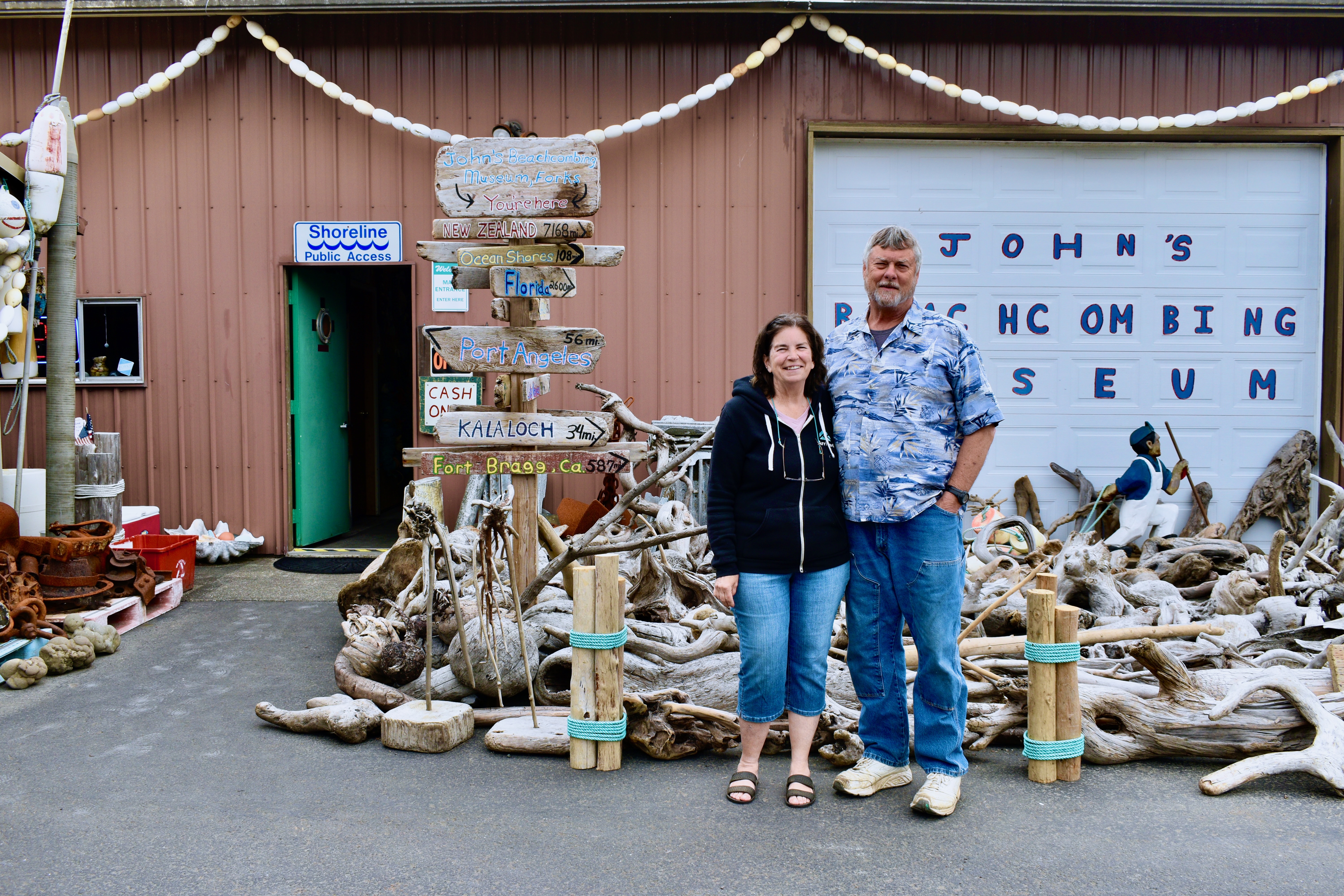
50 Years Of Flotsam: John’s Beachcombing Museum
Listen
(Runtime 4:30)
Read
Deep, dark, and mysterious. Most people think that whatever falls into the ocean is lost forever, but not John Anderson.
Born and raised in Forks, he spends a lot of time walking the beaches of the Olympic peninsula. When he was 22, he picked up the Holy Grail of beachcombing, a Japanese glass float – and from that moment, he was hooked.
“And that’s what most people go beachcombing for is glass floats because they look cool, they’re collectible. It’s amazing they survive washing over and washing up on the beaches and not get broken,” said Anderson.
The Japanese glass float is an iconic piece of flotsam. Round glass bubbles that come in all different colors and sizes, usually wrapped in rope. Anybody who has been to a coastal town knows what these look like. John says they aren’t that common to find these days because they stopped making them around the late ’60s and early ’70s. John has hundreds of them because he has been scouring the beach for nearly 50 years. He has some pretty rare ones too. His most prized possession is a dumbbell-shaped float.
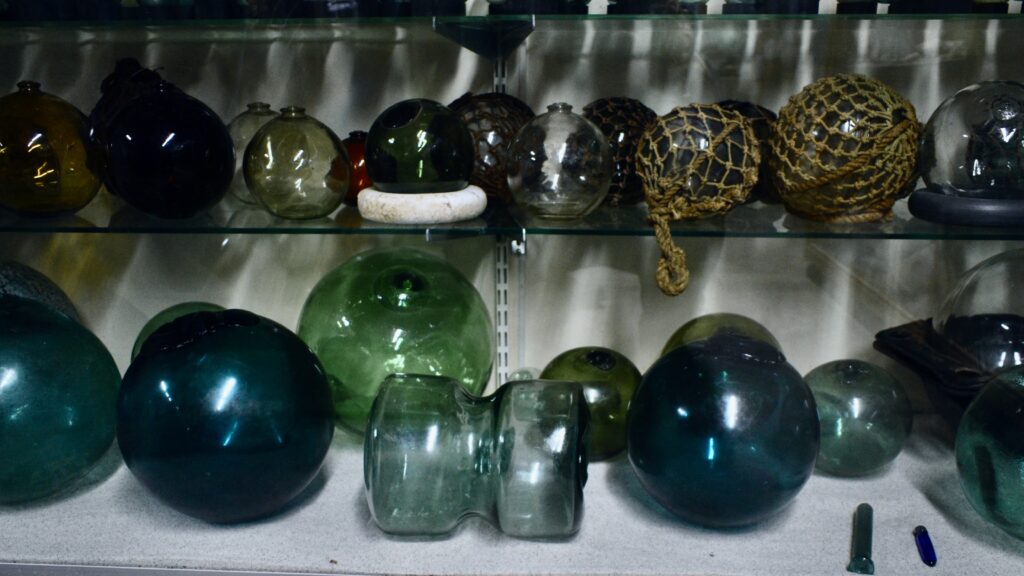
A retired plumber, John has been beach-combing since the ’70s. In certain circles he is known as the world’s greatest beachcomber.
Chains from medieval ships, parts of space probes, dozens of Nike shoes from the shoe spill of 1990, hundreds of bottles of Suntory whiskey, 1000s of rubber buoys–which he turns into sculptures that can only be described as monuments. There are millions of lost—now found—items in his plumbing shop, which he converted into a museum. The museum opened in the mid-2010s to the public, like a shrine to the sea.
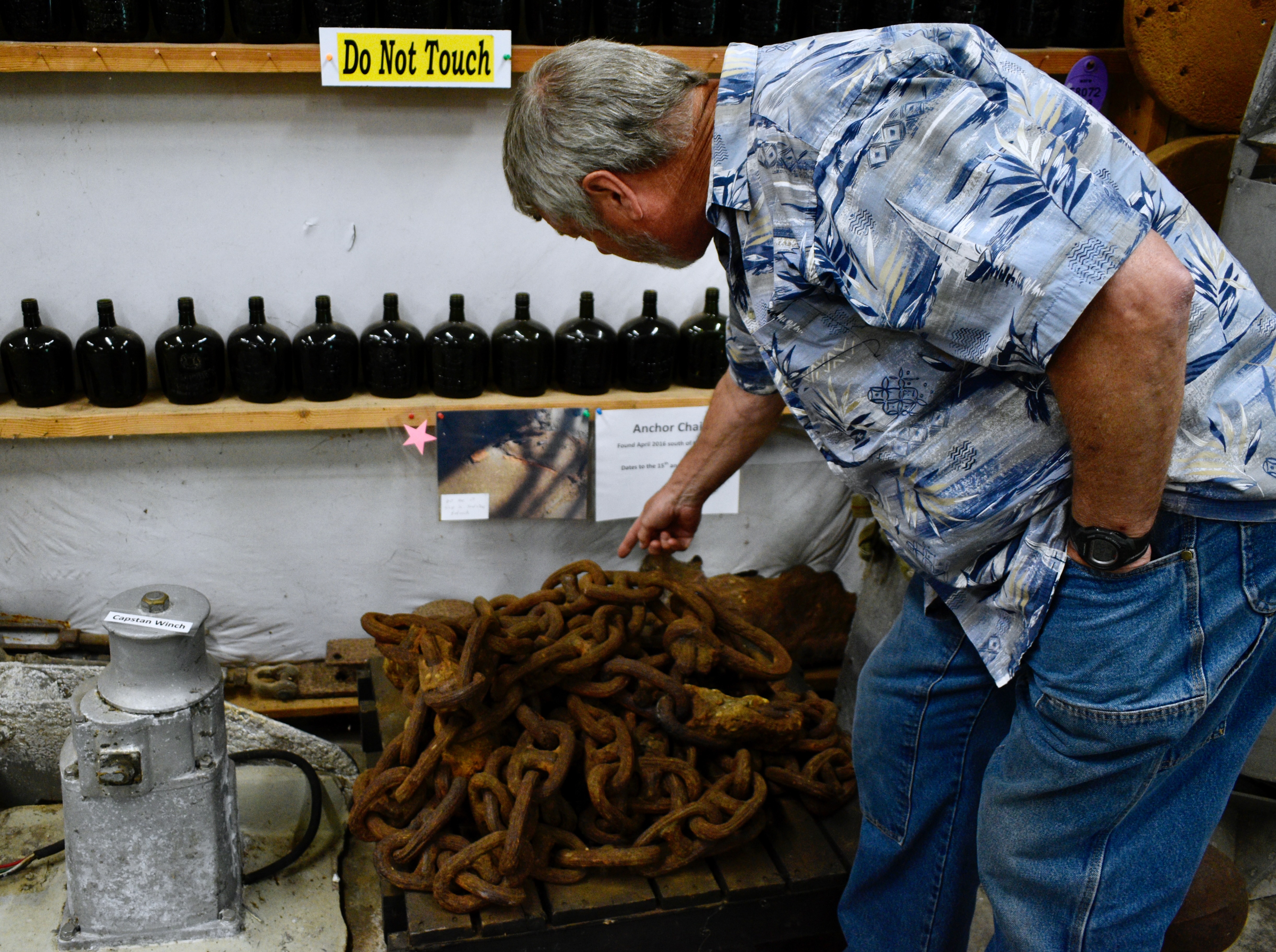
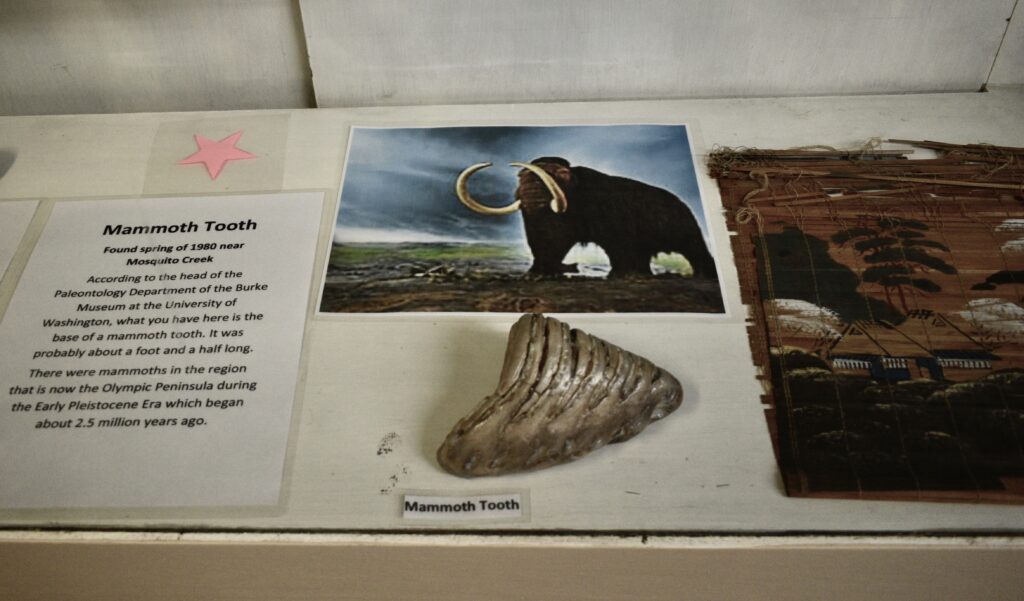
“My first favorite thing that I found was a fossilized mammoth tooth from the Pleistocene era. I didn’t know what it was University of Washington [identified] it and dated it for me…. It probably washed out of the bank there and was laying on the beach, getting kicked around with the rocks. And then the weirdest thing I found is a snake in a sake bottle.”
He says doesn’t use a metal detector when he goes beach-combing, just his eyes. He takes whatever he can fit into his backpack. But there’s some treasures too large.
“Well, I found a part turned out to be center spinner cone from the Boeing 727 jet engine,” said Anderson.
He’s also found boats and pallets that fall off cargo ships. The stuff that doesn’t fit in his backpack gets loaded up in his truck. The really big stuff, he flies it out with a helicopter.
“Back in the day, I had a friend with a helicopter he would fly stuff off for me, and I used to be a volunteer with the park service when I was a young man and I would coordinate a plane up on a section of beach that I had something really big on or a big stash of buoys on, get it all flown off,” Anderson explained.
Lining the museum’s driveway are thousands of rubber buoys. There are all different colors and sizes. Some have Japanese writing on them. Anderson say many of his finds come from Japan. He says that’s because the currents of the Pacific Ocean bring stuff from the eastern hemisphere to the western hemisphere. He uses the buoys to build his huge sculptural installations.
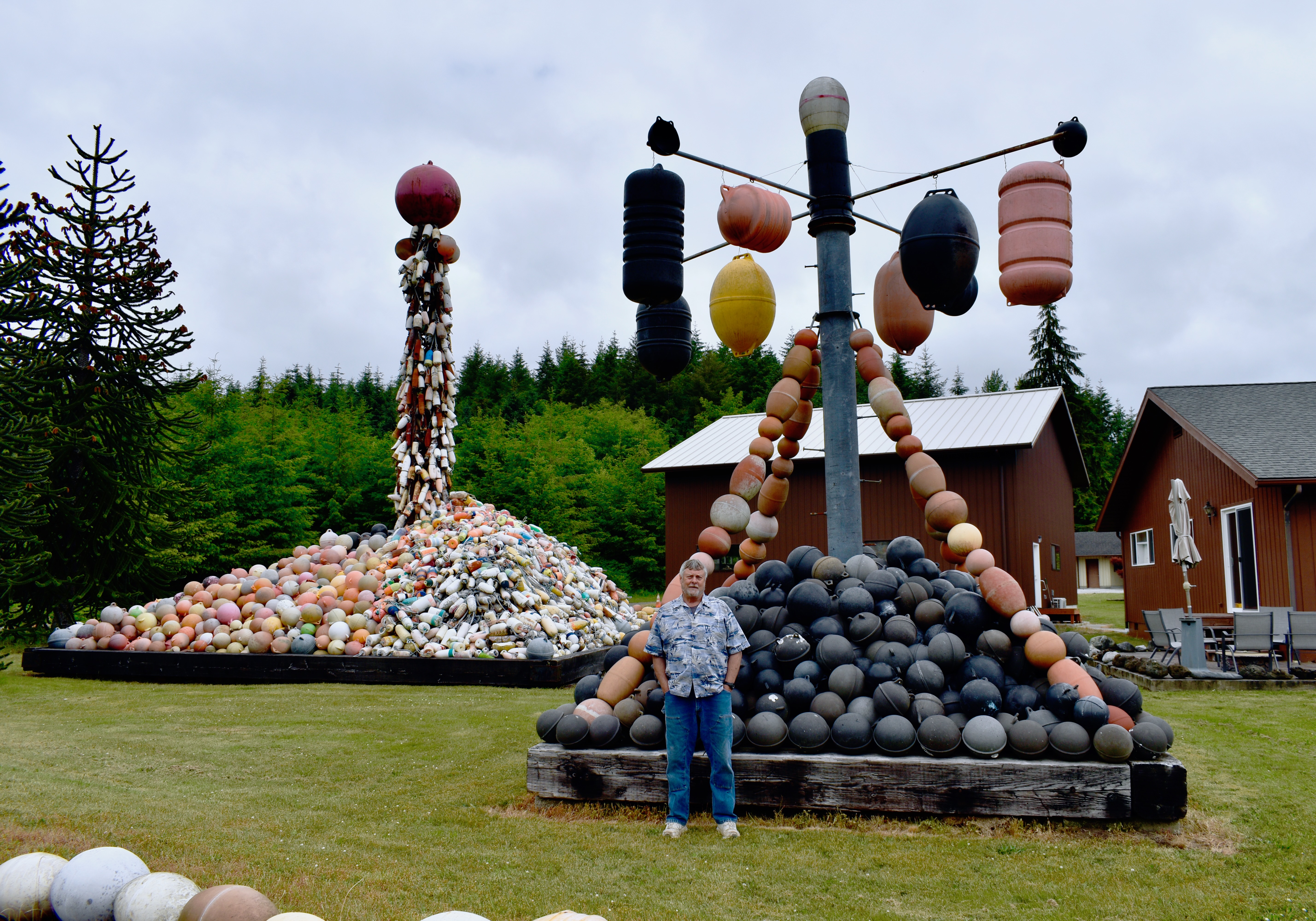
When you into the museum you are greeted by Anderson or his wife, Deb. He met her the same year he started beach-combing. The costs a few dollars to get in, and the first thing you’ll see are Deb’s driftwood sculptures
There is a wall stacked floor-to-ceiling with Suntory whiskey bottles. He says he has so many of these because Suntory was a favored brand among Japanese sailors. After enjoying most of the bottle, it gets thrown overboard because according to superstition the very last sip belongs to the ocean.
Next to the whiskey wall hangs a purple starfish. Anderson made from water bottles, five-gallon jugs, ropes, etc. and painted purple. Pieces like this make you imagine how much plastic this man has scooped out of our oceans.
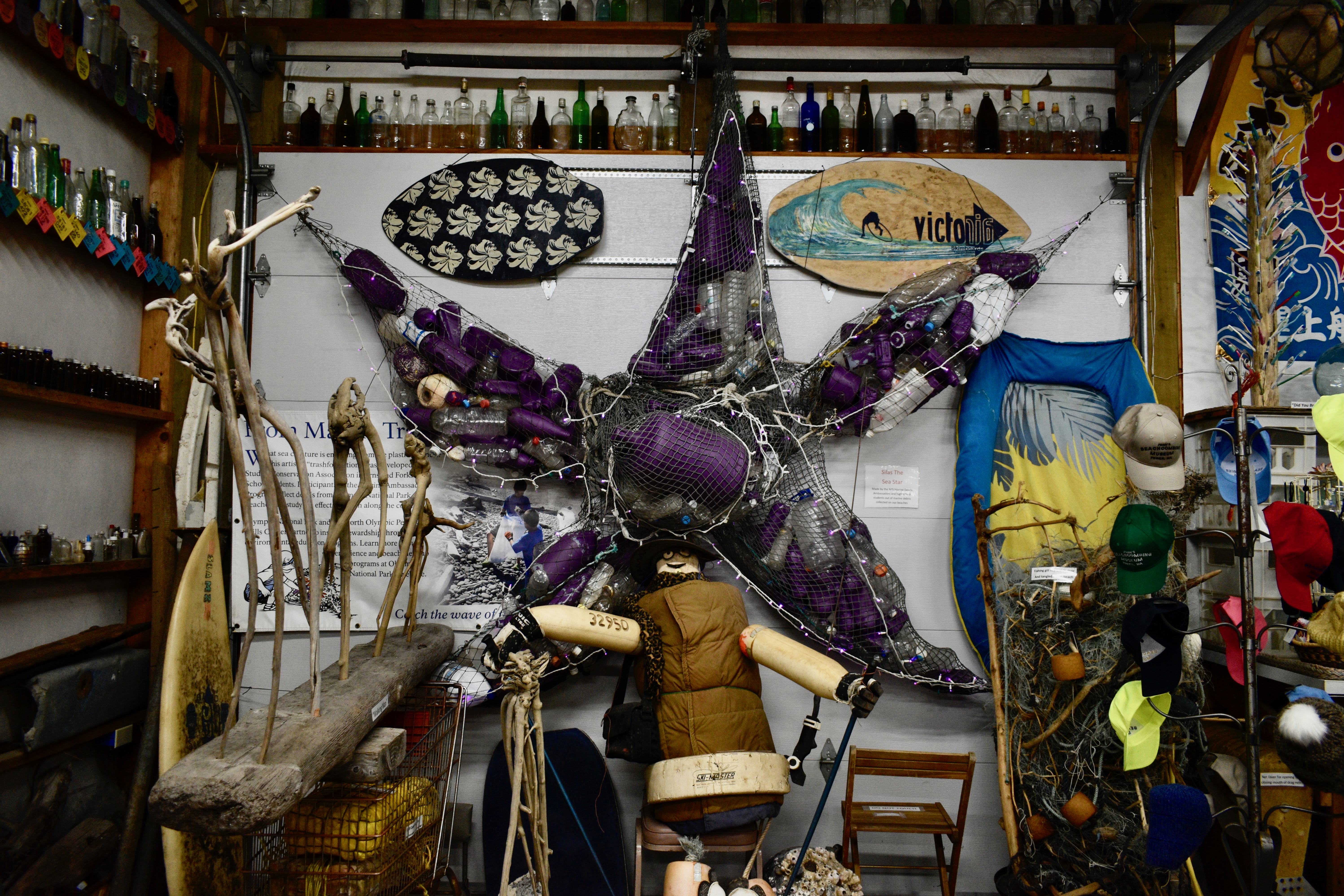
There’s an exhibit on the 2011 Japanese Tsunami. In March of that year a huge earthquake sent a tsunami crashing into the Japanese coast, engulfing nearly one hundred cities and pulling millions of tons of debris out to see. It took nearly a year for the ocean currents to carry the items to the Washington coast. Debris from the tsunami is still being found on the beaches today, more than a decade later.
Winding your way through the maze of the museum, you will see a book full of messages pulled from bottles. Every once in a while, somebody will come into the museum and recognize a message’s author.
“I meet people that know like the notes and bottles. I had a young gal on here one day she was in her early 20s, she was reading the messages. She was like ‘Oh my god! That was my boyfriend in high school.’ It was a like an eight year old kid who wrote this note in a bottle, that was her boyfriend in high school. Two weeks later, there was a young guy in here and he looked at [the same note] he says ‘I know that guy, he was one of my buddies in high school.’ So just in two weeks I’ve met other people that know people in there,” Anderson recounted.
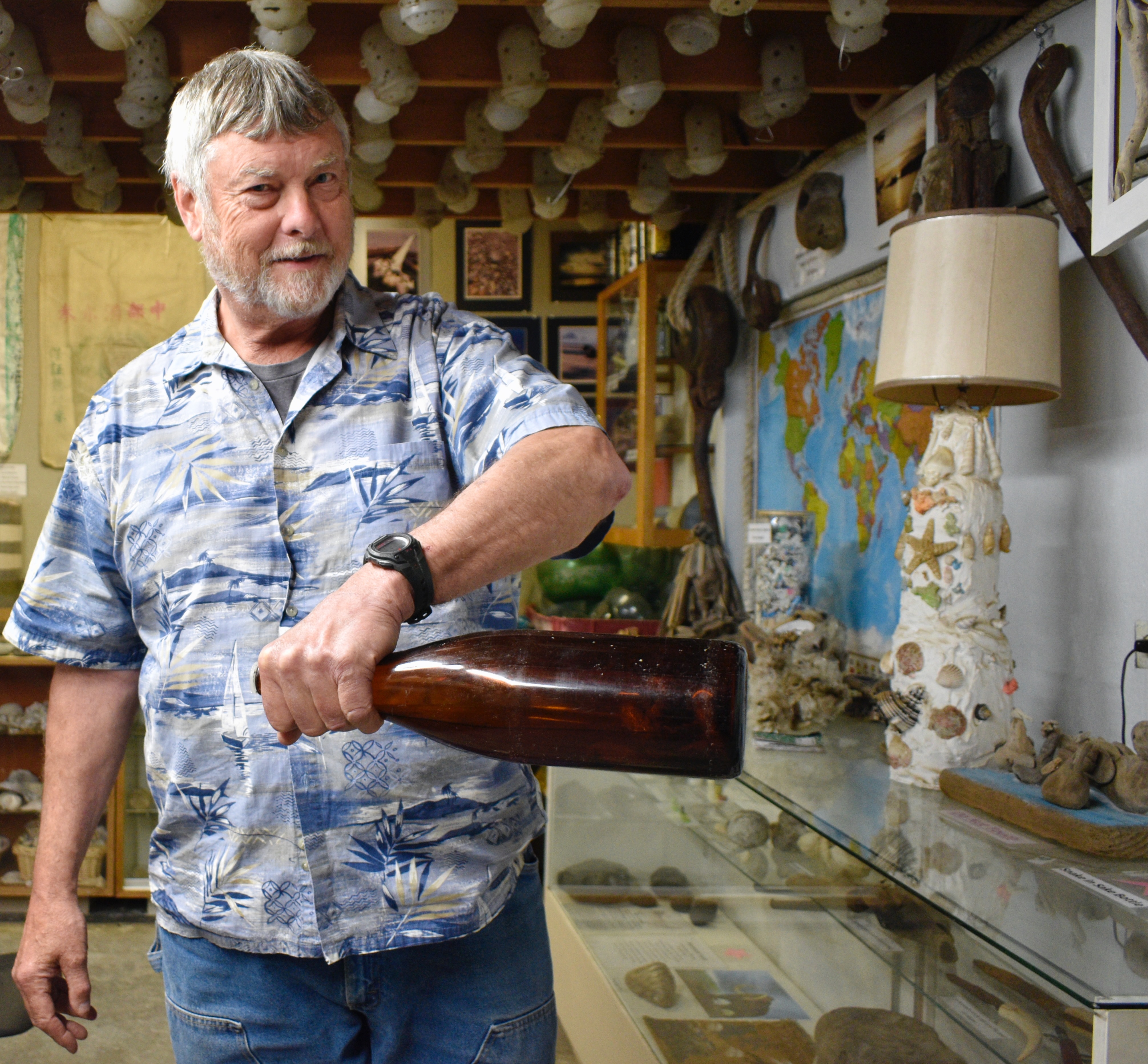
The back room is where the real treasures are. He keeps his mammoth tooth in here, and his one-of-a-kind, bell-shaped glass float is kept protected in a glass case. His old bottle of Habushu, a type of sake with a habu pit viper in it, is here and so is part of a space probe that was launched off his property and promptly exploded on takeoff.
One of the items Anderson says people always remember when they visit this museum is also kept in this room, a pair of slippers. He says the story goes, one of his plumbing customers found a lone slipper on the beach. It has a name on it, Mr. Closkey. It’s counterpart was nowhere to be found. But one year later when John is walking along the beach, he stumbled across another slipper, also with Mr. Closkey’s name on it. The pair is hanging on the walls of this room, finally reunited.
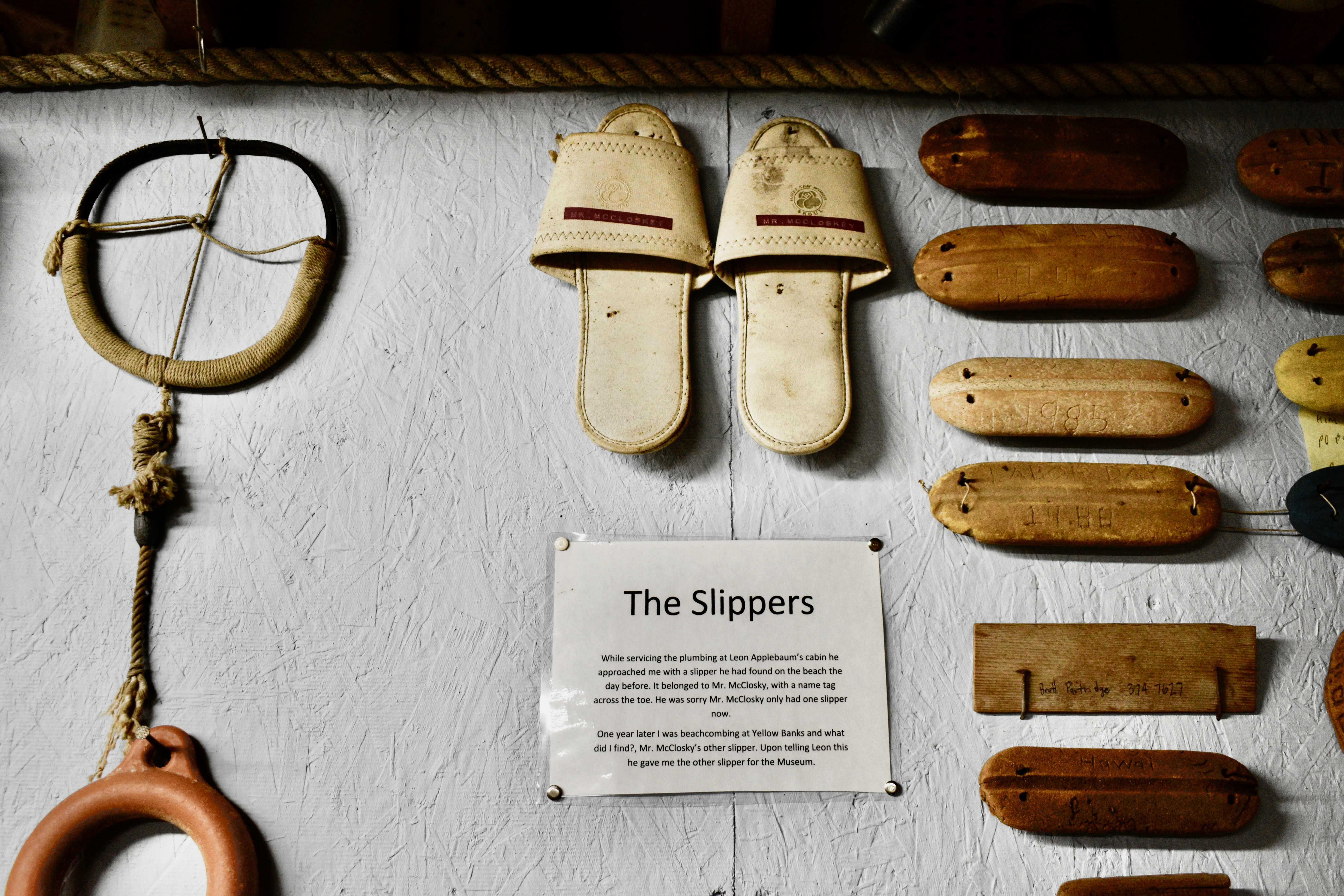
He’s pretty good at identifying the items that he finds. But when picking up everything off the beach, sometimes there’s a lot of unknowns.
Anderson says, “a lot of my things were [identified] by customers. I had an old timer come in here and he was looking at thing I had and I didn’t know what it was. He said, ‘I know what that as he says that’s a life raft radio from World War Two. A Gibson Girl life raft radio.’”
He went on to explain the man was a Navy pilot in World War II in Alaska. “If you’ve had to ditch your plane in the ocean and eject he says that life raft rejected with that radio and you had to swim to it to radio for help. And in all these years it washed up on the beach here,” said Anderson
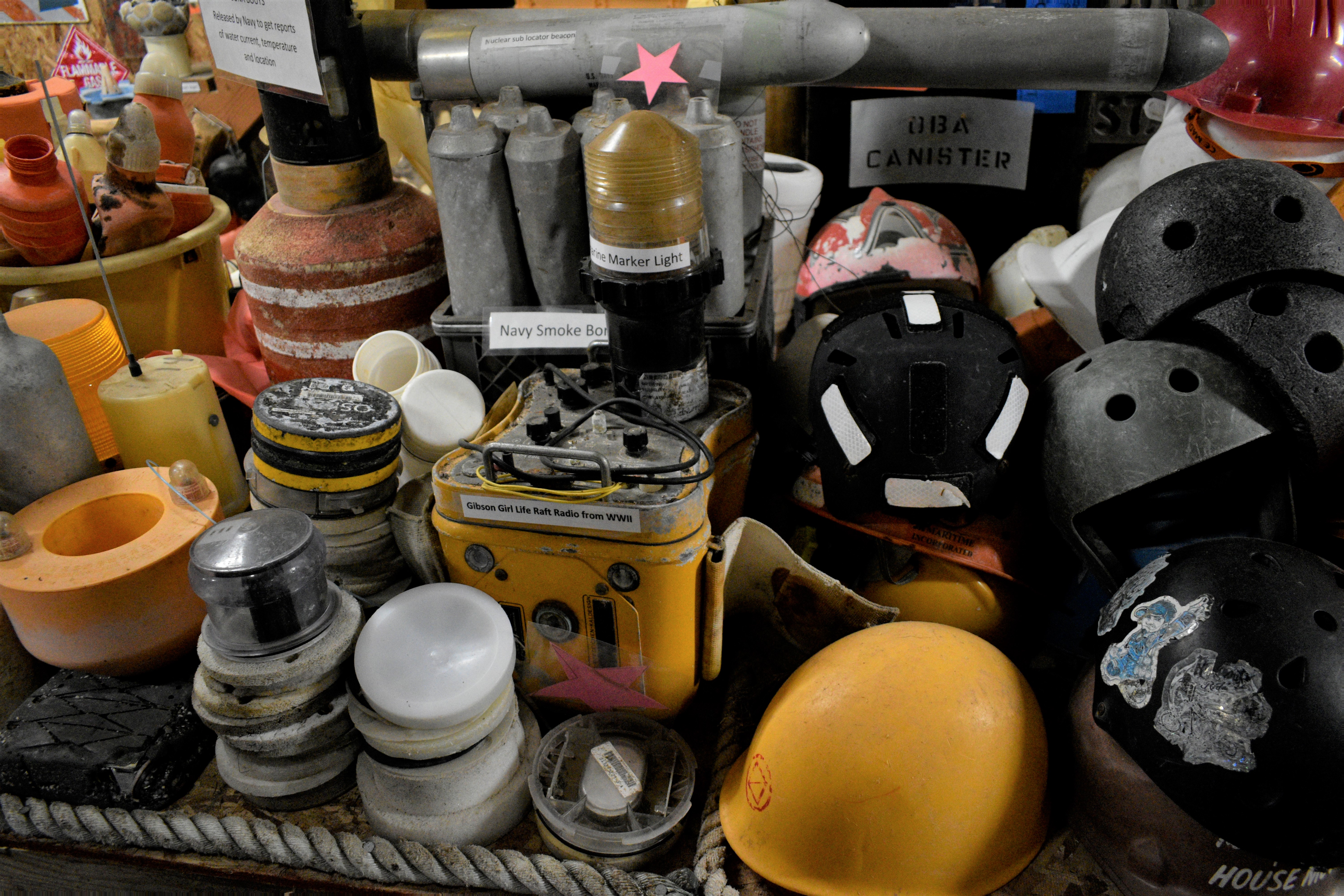
And this stuff doesn’t just sit around and collect dust. Sometimes Anderson wears the hats that he finds on the beach. He uses washed up plates and forks and Nalgene bottles for picnics. He says thirty percent of the lumber he used to build his house was found on the beach.
Anderson says that beach-combers are a nice community. There are Facebook groups where people can share their finds. If you’re interested in beach-combing, John says the best advice is to just get out there and start looking.
“Get your pack and get up early in the morning and go to some remote beaches. Get a big building to put it in. Hope your wife lets you haul it all home.”
This story was produced as part of Northwest Public Broadcasting’s Centennial. Celebrating the people, places and things of the Northwest.















